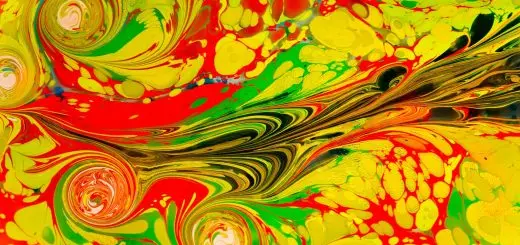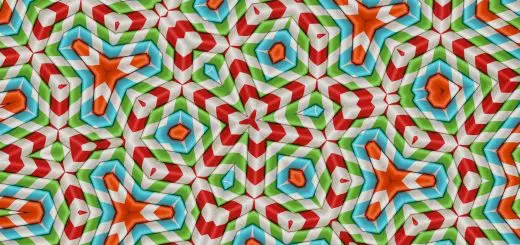Indus Valley Copper Artifacts: Tools and Jewelry

Looking for more amazing products? Check out our online store and explore our collection here! Happy shopping!
Before diving in, please note: This post is for informational purposes only. If you’d like to know more about how we approach topics, feel free to check out our friendly Disclaimer Page.
Hey there, amazing readers! 
We’re committed to delivering quality posts, and your support (even just sticking around despite the ads) means everything to us. So, bear with us, and thanks for helping us keep the good vibes rolling. Now, on to the fun stuff!
TRANSLATE BUTTON AT THE END OF THE ARTICLE
Introduction to Indus Valley Civilization
The Indus Valley Civilization, also known as the Harappan Civilization, flourished around the Bronze Age in the northwestern regions of South Asia, primarily in what is now present-day Pakistan and northwest India.
This ancient civilization dates back to around 3300-1300 BCE and is considered one of the earliest urban societies in the world.
The Indus Valley Civilization is renowned for its advanced urban planning, sophisticated drainage systems, impressive brickwork, and intricate pottery.
However, one of the most fascinating aspects of this civilization is its mastery of metallurgy, particularly the use of copper for tools and jewelry.
Importance of Copper in Indus Valley
Copper played a crucial role in the development of the Indus Valley Civilization.
The abundance and malleability of copper made it an ideal material for crafting tools and ornaments.
The Harappans were the first in the world to smelt copper on a large scale, which significantly advanced their technological capabilities.
Copper tools were essential for various activities such as agriculture, construction, and artisanal work.
Additionally, the craftsmanship of copper jewelry showcased the artistic skills and aesthetic sensibilities of the Harappan people.
Tools Used by Indus Valley People
The Indus Valley people utilized a wide array of tools made from copper to facilitate their daily tasks.
These tools included axes, chisels, knives, drills, saws, and other implements essential for agriculture, carpentry, and metalworking.
The precision and durability of these copper tools reflected the craftsmanship and ingenuity of the Harappan artisans.
The use of copper tools not only increased productivity but also enabled the civilization to create intricate structures and artifacts.
Copper Artifacts Unearthed in Excavations
Archaeological excavations in the Indus Valley have unearthed a plethora of copper artifacts that shed light on the technological advancement and cultural practices of the Harappan civilization.
These artifacts include tools, weapons, utensils, and decorative objects crafted from copper.
The meticulous craftsmanship and intricate designs of these artifacts demonstrate the sophistication and artistic prowess of the ancient Harappan artisans.
The discovery of copper artifacts has provided valuable insights into the daily life, trade networks, and metallurgical techniques of the Indus Valley people.
Types of Tools Found in Indus Valley
The types of tools found in the excavations of the Indus Valley Civilization showcase the diverse range of activities and industries that the Harappan people were engaged in.
Some of the most common tools unearthed include:
Copper axes for woodworking and clearing land
Copper chisels for carving stone and wood
Copper knives for cutting and slicing
Copper drills for creating holes in various materials
Copper saws for shaping and cutting objects
These tools were essential for agriculture, construction, metalworking, and other artisanal activities, highlighting the advanced technological capabilities of the Harappan civilization.
Significance of Copper Artifacts in History
The copper artifacts discovered in the excavations of the Indus Valley Civilization hold immense historical significance.
These artifacts not only provide valuable insights into the technological advancements and craftsmanship of the Harappan people but also contribute to our understanding of ancient trade networks and cultural interactions.
The intricate designs and craftsmanship of the copper artifacts reflect the artistic sensibilities and cultural traditions of the Indus Valley civilization.
Studying these artifacts helps us unravel the mysteries of the past and appreciate the ingenuity of our ancestors.
Jewelry Making Techniques in Indus Valley
Jewelry making was a highly developed craft in the Indus Valley Civilization, with artisans utilizing various techniques and materials to create exquisite ornaments.
Copper was a popular choice for crafting jewelry due to its durability, malleability, and intrinsic beauty.
The Harappan artisans employed techniques such as casting, hammering, and filigree work to fashion intricate pieces of jewelry.
These techniques required skill, precision, and creativity, resulting in stunning ornaments that adorned the elite members of society.
Copper Jewelry Discoveries in Excavations
Excavations in the ruins of the Indus Valley Civilization have unearthed a treasure trove of copper jewelry, including necklaces, bracelets, rings, earrings, and other decorative items.
The craftsmanship and artistry displayed in these jewelry pieces are truly remarkable, with intricate patterns, geometric motifs, and symbolic designs adorning each piece.
The discovery of copper jewelry in the excavations provides evidence of the advanced metallurgical skills and aesthetic sensibilities of the Harappan artisans.
Cultural Symbolism of Indus Valley Jewelry
Jewelry held significant cultural symbolism in the Indus Valley Civilization, serving as markers of social status, identity, and religious beliefs.
The intricate designs and motifs found in the copper jewelry of the Harappan people often reflected their cosmological beliefs, connection to nature, and reverence for deities.
Jewelry was not merely decorative but held profound cultural and spiritual meanings for the ancient inhabitants of the Indus Valley.
The symbolism of jewelry in the Harappan society provides valuable insights into their social structure, religious practices, and artistic expressions.
Comparing Indus Valley Jewelry with Other Civilizations
The copper jewelry of the Indus Valley Civilization stands out for its unique designs, sophisticated craftsmanship, and cultural significance.
When compared to the jewelry of other ancient civilizations such as Mesopotamia, Egypt, and China, the jewelry of the Harappan people exhibits a distinct style and aesthetic sensibility.
The intricate filigree work, geometric patterns, and symbolic motifs found in Indus Valley jewelry set it apart from the jewelry of contemporary civilizations.
The comparison of Indus Valley jewelry with that of other ancient cultures highlights the diversity and richness of artistic traditions across different regions and time periods.
Preservation and Display of Copper Artifacts
Preserving and displaying copper artifacts from the Indus Valley Civilization is essential to safeguarding our cultural heritage and promoting historical awareness.
Museums, archaeological institutes, and cultural institutions play a crucial role in conserving and showcasing these valuable artifacts to the public.
Proper storage, handling, and display techniques are employed to ensure the longevity and integrity of copper artifacts.
By making these artifacts accessible to the public through exhibitions and educational programs, we can celebrate the achievements of the Harappan civilization and inspire future generations to appreciate our shared human history.
Future Research on Indus Valley Copper Artifacts
Future research on Indus Valley copper artifacts holds great promise for expanding our knowledge of this ancient civilization and its technological achievements.
Advanced scientific techniques such as metallurgical analysis, isotopic studies, and 3D imaging can provide new insights into the composition, production techniques, and usage of copper artifacts.
Interdisciplinary collaborations between archaeologists, historians, metallurgists, and materials scientists can further enhance our understanding of the role of copper in the development of the Indus Valley Civilization.
By continuing to investigate and analyze copper artifacts, we can unlock the secrets of the past and gain a deeper appreciation for the ingenuity and creativity of the Harappan people.
Conclusion
The Indus Valley Civilization’s mastery of copper for tools and jewelry exemplifies the technological prowess, artistic skills, and cultural sophistication of this ancient society.
The abundance of copper artifacts unearthed in archaeological excavations provides valuable insights into the daily life, craftsmanship, and societal practices of the Harappan people.
The significance of copper in the Indus Valley Civilization cannot be understated, as it underpins the civilization’s technological advancements, artistic achievements, and cultural expressions.
By studying and preserving these copper artifacts, we can unravel the mysteries of the past and appreciate the legacy of the Indus Valley Civilization for generations to come.

The Enlightenment Journey is a remarkable collection of writings authored by a distinguished group of experts in the fields of spirituality, new age, and esoteric knowledge.
This anthology features a diverse assembly of well-experienced authors who bring their profound insights and credible perspectives to the forefront.
Each contributor possesses a wealth of knowledge and wisdom, making them authorities in their respective domains.
Together, they offer readers a transformative journey into the realms of spiritual growth, self-discovery, and esoteric enlightenment.
The Enlightenment Journey is a testament to the collective expertise of these luminaries, providing readers with a rich tapestry of ideas and information to illuminate their spiritual path.
Our Diverse Expertise
While our primary focus is on spirituality and esotericism, we are equally passionate about exploring a wide range of other topics and niches 

To ensure we provide the most accurate and valuable insights, we collaborate with trusted experts in their respective domains 
Our blog originally focused on spirituality and metaphysics, but we’ve since expanded to cover a wide range of niches. Don’t worry—we continue to publish a lot of articles on spirituality! Frequently visit our blog to explore our diverse content and stay tuned for more insightful reads.
Hey there, amazing reader! 
Check out our store here and take a peek at some of our featured products below! Thanks for being awesome!











